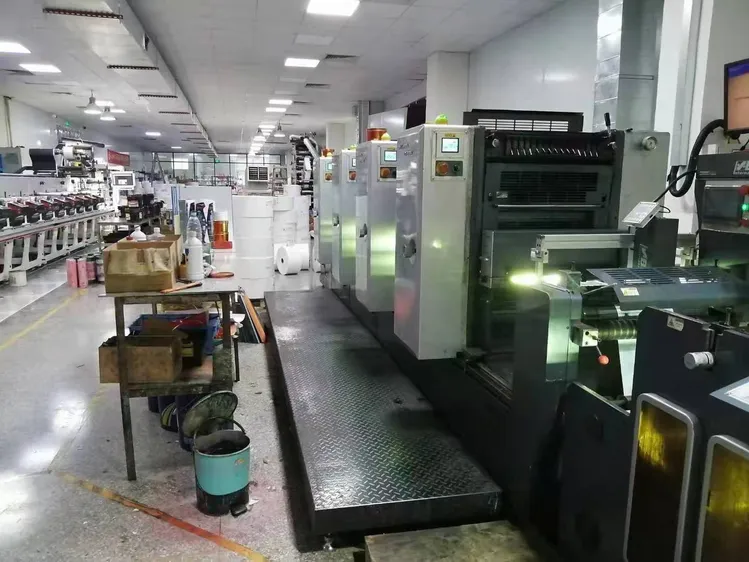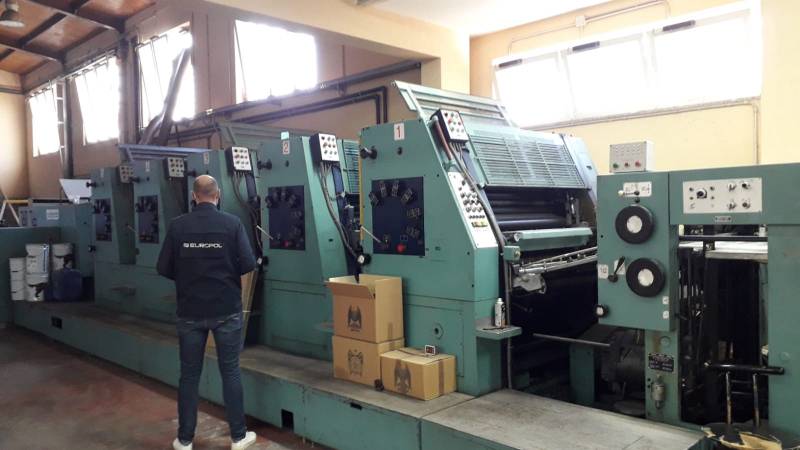The global battle against counterfeit goods has prompted the rise of anti-counterfeit printing technologies. However, this industry faces a myriad of compliance challenges that businesses must navigate to safeguard their products. The significance of these challenges cannot be overstated, as they play a pivotal role in maintaining the integrity and safety of various industries. Understanding these compliance hurdles is crucial for businesses aiming to protect their brand and consumers.

What is Anti-Counterfeit Printing?
Anti-counterfeit printing refers to the use of advanced printing techniques to prevent the replication of products by counterfeiters. These techniques encompass a range of technologies, including holograms, watermarks, and special inks that are difficult to reproduce. The primary goal is to authenticate products, ensuring that consumers receive genuine goods.
Why Compliance is Crucial
Compliance in anti-counterfeit printing is essential to maintain the trust of consumers and regulatory bodies. It ensures that the technologies used are up to date, effective, and adhere to industry standards. Failing to comply can lead to legal repercussions, financial losses, and damage to brand reputation.
Key Compliance Challenges
One of the primary compliance challenges in anti-counterfeit printing is keeping up with rapidly changing regulations. Different countries have varying compliance requirements, making it challenging for global businesses to standardize their anti-counterfeit measures. Additionally, the fast-paced evolution of counterfeiting techniques demands continuous updates and innovations in printing technologies.
Technological Advancements
Technological advancements pose both opportunities and challenges for compliance in anti-counterfeit printing. While new technologies offer enhanced security features, they also require businesses to stay informed and adapt to these changes promptly. This can be resource-intensive, requiring significant investment in research and development.
Cost Implications
Implementing compliant anti-counterfeit measures can be costly. Businesses must balance the need for efficient security solutions with budget constraints. This often involves investing in high-quality materials and advanced technologies, as well as training staff to ensure the proper implementation of these measures.
Regulatory Compliance
Regulatory compliance is a critical aspect of anti-counterfeit printing. Businesses must adhere to local and international regulations, which can vary significantly. This requires a thorough understanding of the legal landscape and the ability to adapt quickly to changes in regulations.
Global Standards
Adhering to global standards is vital for businesses operating in multiple countries. Organizations like the International Organization for Standardization (ISO) provide guidelines that help businesses ensure their anti-counterfeit measures meet worldwide standards. However, aligning with these standards can be challenging, especially for smaller businesses with limited resources.
Environmental Compliance
Environmental compliance is another important consideration. As businesses strive to become more sustainable, they must ensure that their anti-counterfeit printing practices do not harm the environment. This involves using eco-friendly materials and processes, which can sometimes increase costs and complicate compliance efforts.
Strategies to Overcome Compliance Challenges
Addressing compliance challenges in anti-counterfeit printing requires a strategic approach. Businesses can benefit from investing in research and development to stay ahead of counterfeiters and comply with regulations. Collaborating with industry experts and participating in forums can also provide valuable insights and guidance.
Training and Education
Training and education play a crucial role in overcoming compliance challenges. By educating employees about the importance of compliance and providing them with the necessary skills, businesses can ensure that their anti-counterfeit measures are implemented effectively.
Collaboration with Industry Leaders
Collaborating with industry leaders and organizations can provide businesses with access to the latest technologies and best practices. This can help them navigate the complex compliance landscape and implement effective anti-counterfeit measures.
Future of Anti-Counterfeit Printing
The future of anti-counterfeit printing is promising, with ongoing advancements in technology and an increased focus on compliance. As the industry continues to evolve, businesses must remain vigilant and proactive in addressing compliance challenges to protect their products and consumers.
Role of Artificial Intelligence
Artificial intelligence is expected to play a significant role in the future of anti-counterfeit printing. AI technologies can enhance the accuracy and efficiency of anti-counterfeit measures, providing businesses with powerful tools to combat counterfeiting.
Blockchain Technology
Blockchain technology is another promising development in the field of anti-counterfeit printing. By providing a secure and transparent way to track products, blockchain can help businesses ensure the authenticity of their goods and comply with regulations.
Conclusion
In conclusion, compliance challenges in anti-counterfeit printing are complex and multifaceted. Businesses must navigate a dynamic regulatory landscape, adapt to technological advancements, and balance cost considerations. By staying informed and proactive, businesses can overcome these challenges and effectively protect their products from counterfeiting.

FAQs
What are the primary compliance challenges in anti-counterfeit printing?
The primary challenges include keeping up with changing regulations, technological advancements, and cost implications.
How can businesses ensure compliance in anti-counterfeit printing?
Businesses can ensure compliance by staying informed about regulations, investing in training, and collaborating with industry experts.
What role does technology play in anti-counterfeit printing?
Technology plays a crucial role by providing advanced security features and helping businesses stay ahead of counterfeiters.
For more insights into anti-counterfeit printing, visit security printing and learn about the latest advancements in the field.
This article contains affiliate links. We may earn a commission at no extra cost to you.







